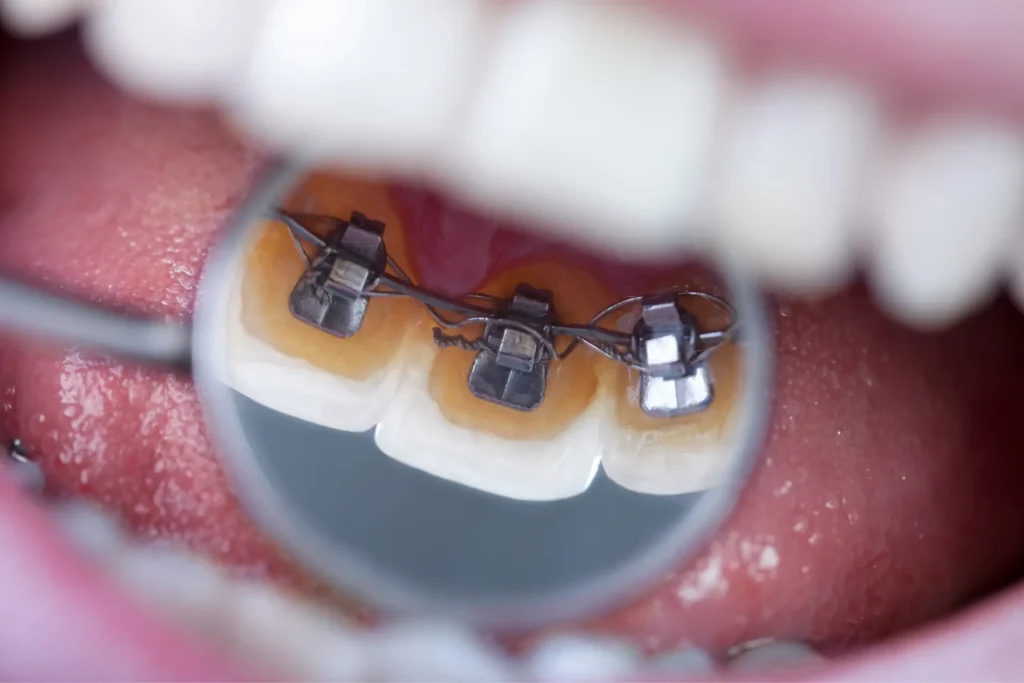
Braces are often the go-to orthodontic treatment for those who wish to have their teeth straightened. But with so many different kinds of braces to choose from, it can be difficult to know which is best for you.
Many people don’t like the look of traditional braces, which have earned the nickname ‘train tracks’ thanks to their bulky, metallic appearance. For those people, lingual braces may be an attractive option, as they sit behind the teeth and aren’t visible to others.

Lingual braces are made up of the same components as traditional braces. The only difference is that they are fixed to the back of your teeth, so that they aren’t visible when you smile or eat. Just like conventional braces, they consist of metal brackets and wires, which place gentle pressure on the teeth over time until they are aligned. Lingual braces require manual tightening every few weeks to keep the teeth moving towards their best position.
There are two kinds of lingual braces:
These focus on the front six to eight teeth (the ‘social six’). They are ideal for small gaps in the front teeth.
These are suitable for crowded, gapped, or crooked teeth, and are designed to align the whole row of teeth.
Lingual braces are able to treat most common forms of malocclusion, including:
However, their suitability for treating such issues will depend entirely on the patient’s case. The only way to find out if you are a good candidate for lingual braces is to speak to a registered dentist or orthodontist.
Lingual braces can cost anywhere between 17,000kr to 90,000kr+. The cost of lingual braces will depend on several factors, including the complexity of your case and which teeth are being moved. For example, a ‘social’ lingual brace may be cheaper than a standard lingual brace, as fewer teeth are being moved.
Most orthodontists will be able to provide you with financing options, so that you can spread the cost of your treatment over time. You may also wish to combine different orthodontic treatments to reduce the cost, such as wearing lingual braces on your top teeth and traditional braces on the bottom.
As lingual braces prevent you from touching the back of your teeth when you talk, this will affect your speech in the short term. You may experience a lisp for a short while, but your tongue will eventually become accustomed and your speech should return to normal.
Lingual braces may cause the wearer discomfort when the braces are put on or adjusted. As with all kinds of braces with brackets, the small parts can cause pain if they come into contact with the soft tissues of the mouth. This means that the tongue is the most common site of pain with lingual braces, due to the location of the brackets.

These days, there are many different kinds of braces to choose from including clear aligners, self-litigating braces, and traditional braces. Each of these different kinds comes with its own pros and cons, and so it is always best to speak to a clinician before making your decision.
Lingual braces may be a good option for you if you want to straighten your teeth without affecting the visibility of your smile. However, lingual braces may not be the best form of orthodontic treatment for your case, so it is always best to consult a dentist or orthodontist first. During your appointment, the clinician will be able to advise you on the most appropriate orthodontic treatment, and give you an estimated cost.